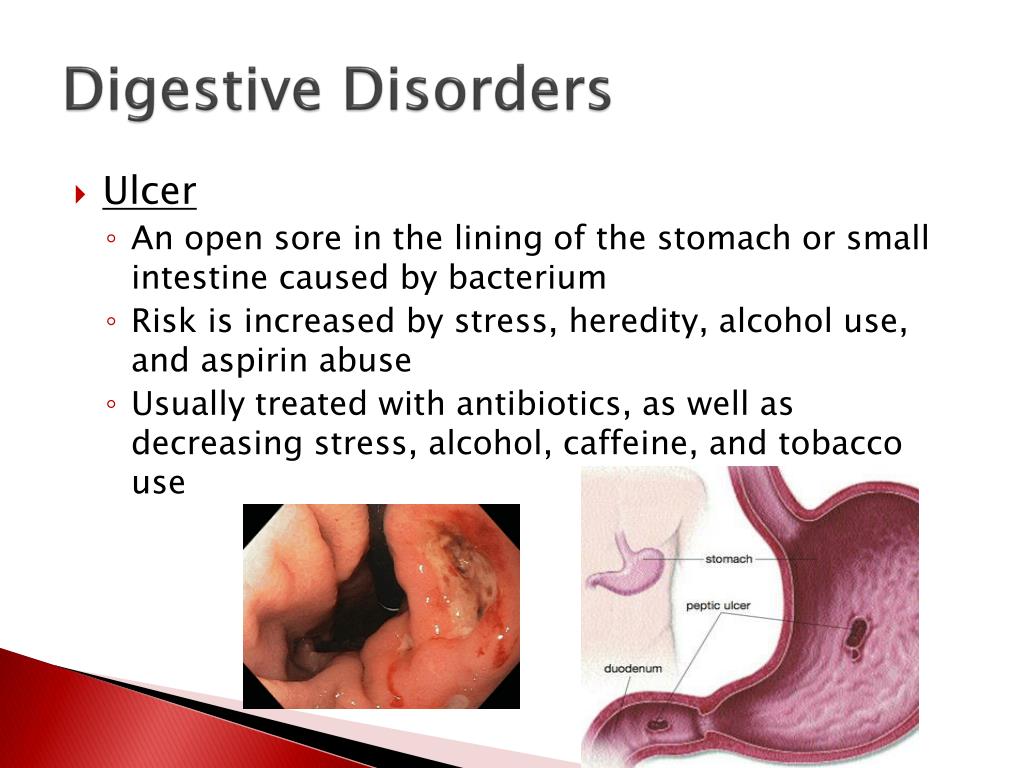Ulcer digestive system. Peptic Ulcers: Causes, Symptoms, and Effective Treatments
What are peptic ulcers. How do they affect the digestive system. What causes peptic ulcers. What are the common symptoms of peptic ulcers. How are peptic ulcers diagnosed. What treatments are available for peptic ulcers. Can peptic ulcers be prevented.
Understanding Peptic Ulcers: A Comprehensive Overview
Peptic ulcers are sores that develop in the lining of the stomach or the first part of the small intestine, known as the duodenum. These painful lesions can significantly impact a person’s quality of life and, if left untreated, may lead to serious complications. In this comprehensive guide, we’ll explore the causes, symptoms, diagnosis, and treatment options for peptic ulcers, providing you with valuable insights into this common digestive condition.
The Anatomy of Peptic Ulcers: Where Do They Occur?
Peptic ulcers can develop in two primary locations within the digestive system:
- Gastric ulcers: These occur in the stomach lining
- Duodenal ulcers: These form in the upper part of the small intestine, called the duodenum
Both types of ulcers share similar characteristics and are often grouped together under the term “peptic ulcers.” However, their specific location can influence symptoms and treatment approaches.

How do peptic ulcers form?
Peptic ulcers develop when the protective mucus layer in the stomach or duodenum is compromised, allowing digestive acids to erode the underlying tissue. This erosion creates a sore or ulcer in the lining of these organs. The process is typically gradual and can be influenced by various factors, including bacterial infections and certain medications.
Common Causes of Peptic Ulcers: Unraveling the Culprits
Understanding the root causes of peptic ulcers is crucial for effective prevention and treatment. While stress and spicy foods were once thought to be primary culprits, modern research has identified two main factors responsible for most peptic ulcers:
1. Helicobacter pylori (H. pylori) infection
H. pylori is a bacterium that can colonize the stomach lining, leading to inflammation and ulcer formation. This spiral-shaped microorganism is estimated to be present in more than half of the world’s population, although not everyone infected will develop ulcers.
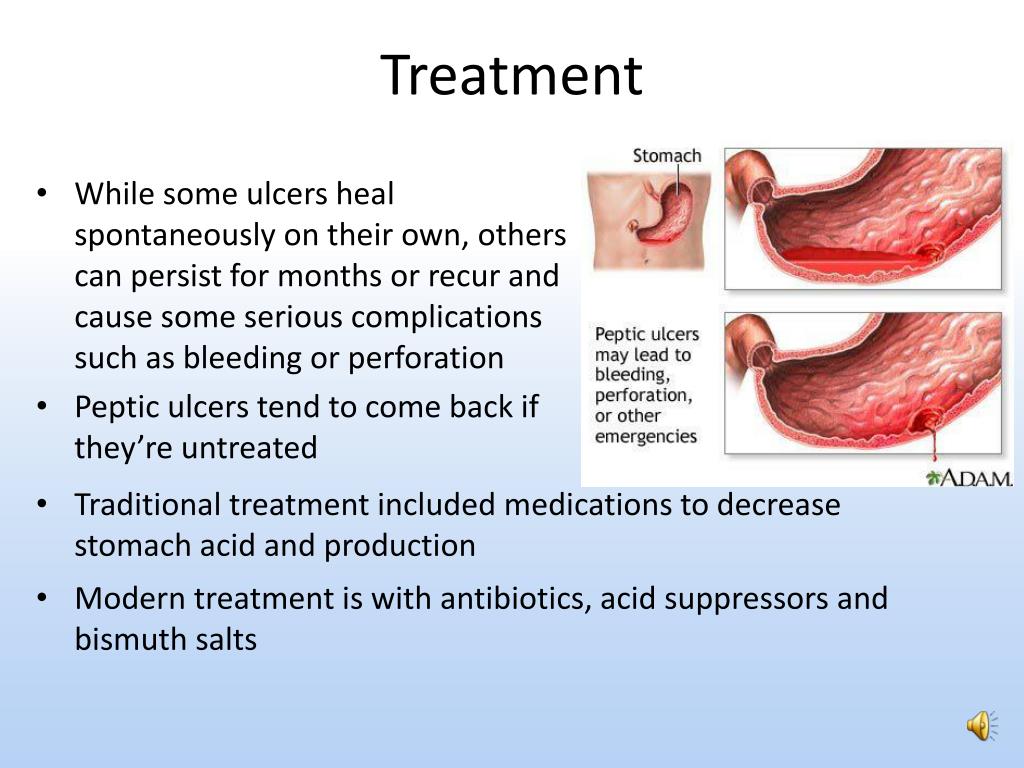
2. Non-steroidal anti-inflammatory drugs (NSAIDs)
Long-term use of NSAIDs, such as aspirin, ibuprofen, and naproxen, can irritate the stomach and duodenal lining, increasing the risk of ulcer formation. These medications inhibit the production of protective substances in the stomach, making the mucosa more vulnerable to acid damage.
While these are the primary causes, other factors can contribute to or exacerbate peptic ulcers:
- Excessive alcohol consumption
- Smoking
- Severe stress (particularly in critically ill patients)
- Zollinger-Ellison syndrome (a rare condition causing excessive stomach acid production)
Recognizing the Symptoms: When to Suspect a Peptic Ulcer
The symptoms of peptic ulcers can vary from person to person, ranging from mild discomfort to severe pain. Some individuals may even have “silent” ulcers with no noticeable symptoms. However, the most common sign of a peptic ulcer is a burning sensation in the stomach, often described as:
- Starting between meals or during the night
- Briefly subsiding after eating or taking antacids
- Lasting for minutes to hours
- Coming and going for several days or weeks
Other symptoms that may indicate the presence of a peptic ulcer include:

- Bloating or feeling of fullness
- Nausea or vomiting
- Loss of appetite
- Unexplained weight loss
- Dark, tarry stools (indicating bleeding in the digestive tract)
When should you seek medical attention for suspected peptic ulcers?
If you experience persistent abdominal pain, particularly if accompanied by any of the following symptoms, it’s essential to consult a healthcare professional:
- Severe, sharp pain that doesn’t improve with antacids
- Vomiting blood or material that looks like coffee grounds
- Blood in your stool or black, tarry stools
- Unintended weight loss
- Difficulty swallowing
These symptoms may indicate complications such as bleeding or perforation, which require immediate medical attention.
Diagnosing Peptic Ulcers: The Path to Confirmation
Accurate diagnosis of peptic ulcers is crucial for effective treatment. Healthcare providers employ various methods to confirm the presence of ulcers and identify their underlying causes:
1. Medical history and physical examination
Your doctor will begin by discussing your symptoms, medical history, and any medications you’re taking. They may also perform a physical examination to check for abdominal tenderness.
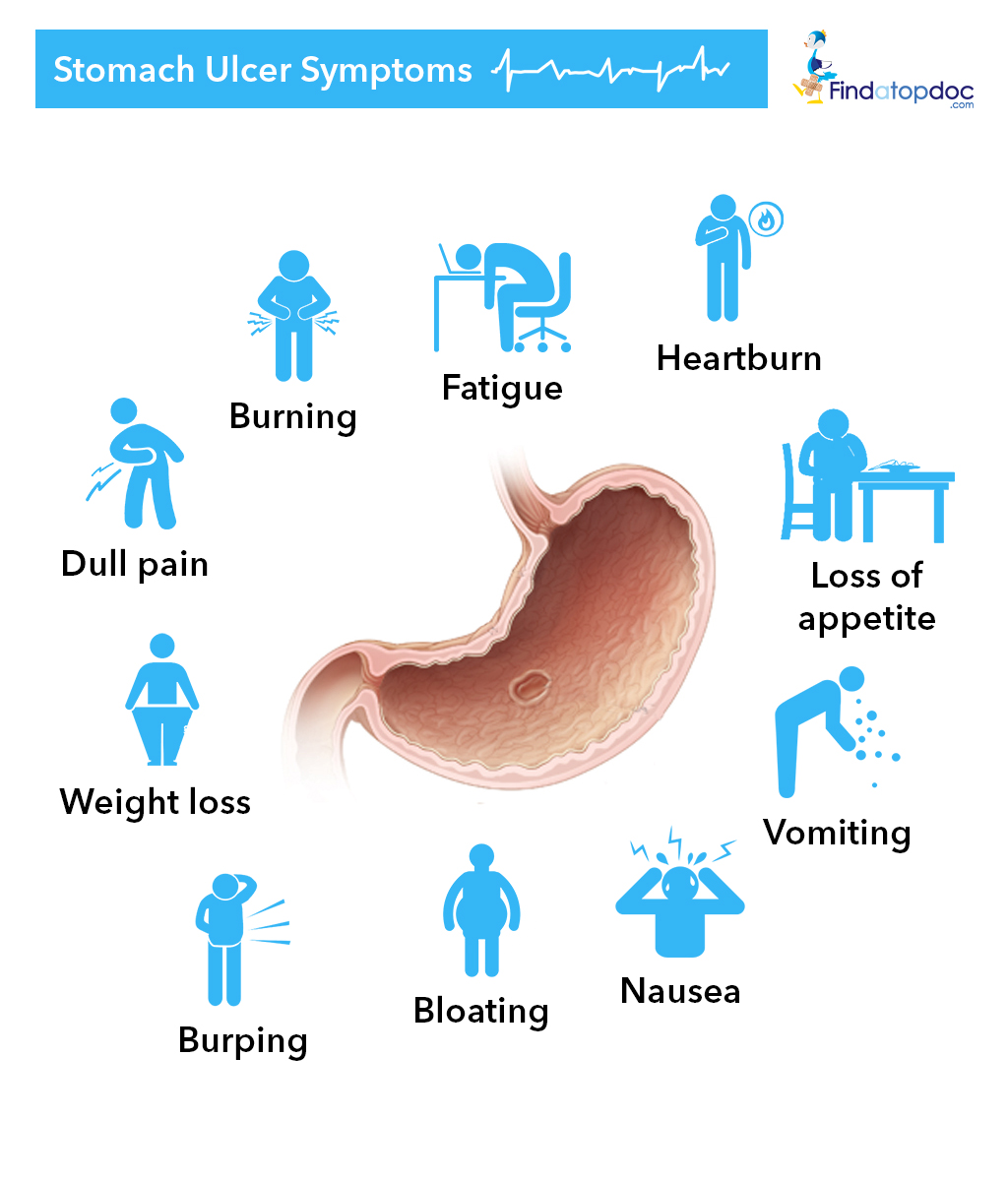
2. H. pylori testing
Several tests can detect the presence of H. pylori bacteria:
- Blood test: Checks for antibodies to H. pylori
- Breath test: Involves drinking a solution and measuring exhaled breath for evidence of H. pylori
- Stool test: Examines a stool sample for H. pylori antigens
3. Endoscopy
An upper endoscopy allows your doctor to visualize the inside of your stomach and duodenum using a thin, flexible tube with a camera. This procedure can identify ulcers and collect tissue samples (biopsies) for further analysis.
4. Imaging tests
In some cases, your doctor may recommend an upper GI series, which involves drinking a contrast solution and taking X-rays to visualize the digestive tract.
Treatment Approaches: Healing Peptic Ulcers Effectively
The treatment of peptic ulcers aims to relieve symptoms, heal the ulcer, and prevent recurrence. The specific approach depends on the underlying cause and severity of the ulcer:
1. Medications
Several types of medications may be prescribed:

- Proton pump inhibitors (PPIs): Reduce stomach acid production
- H2 receptor blockers: Also decrease acid production
- Antacids: Neutralize existing stomach acid
- Antibiotics: Used to eradicate H. pylori infection
- Cytoprotective agents: Protect the lining of the stomach and small intestine
2. Lifestyle modifications
In addition to medication, certain lifestyle changes can support healing and prevent future ulcers:
- Quitting smoking
- Limiting or avoiding alcohol consumption
- Managing stress through relaxation techniques or counseling
- Avoiding foods that trigger discomfort
3. Follow-up care
Your doctor may recommend follow-up tests to ensure the ulcer has healed and H. pylori has been eradicated. In rare cases where ulcers don’t respond to treatment or complications occur, surgery may be necessary.
Preventing Peptic Ulcers: Proactive Measures for Digestive Health
While not all peptic ulcers can be prevented, you can take steps to reduce your risk:
- Practice good hygiene to reduce the risk of H. pylori infection
- Use NSAIDs cautiously and only as directed
- Consider alternative pain relief methods when possible
- Maintain a healthy diet rich in fruits, vegetables, and whole grains
- Manage stress through regular exercise and relaxation techniques
- Limit alcohol consumption and avoid smoking
Living with Peptic Ulcers: Long-term Management and Outlook
With proper treatment and lifestyle modifications, most peptic ulcers heal within a few months. However, it’s essential to follow your doctor’s recommendations and attend follow-up appointments to ensure complete healing and prevent recurrence.
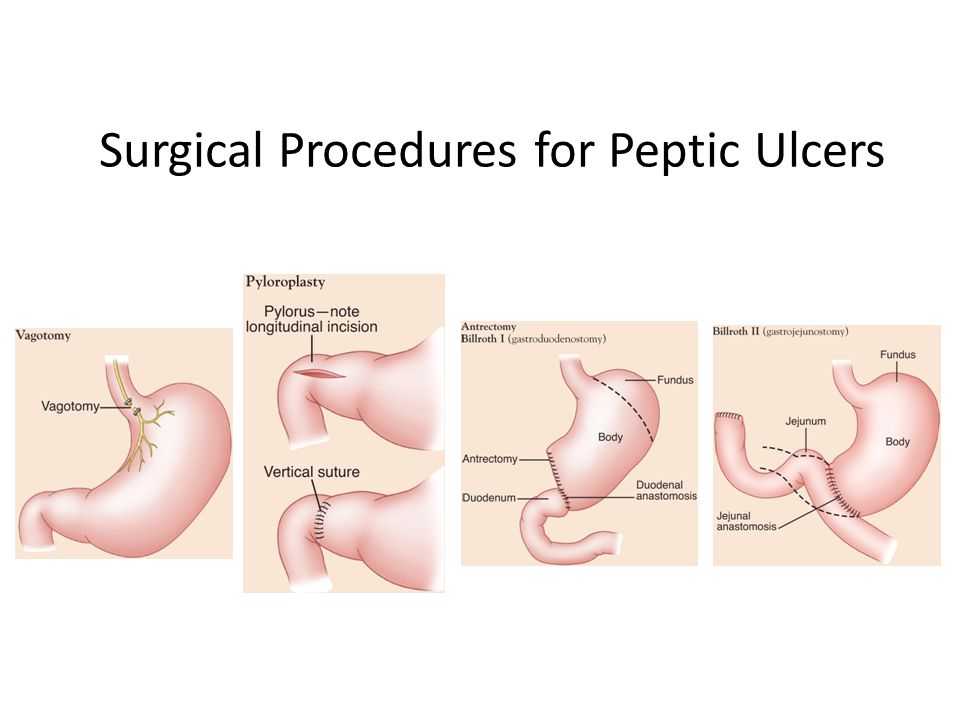
Can peptic ulcers recur after treatment?
Yes, peptic ulcers can recur, especially if the underlying cause (such as H. pylori infection or NSAID use) is not adequately addressed. Maintaining a healthy lifestyle and following your doctor’s advice can significantly reduce the risk of recurrence.
Are there any long-term complications of peptic ulcers?
While most peptic ulcers heal without complications, some potential long-term issues may include:
- Internal bleeding
- Perforation of the stomach or intestinal wall
- Obstruction of the digestive tract
- Increased risk of gastric cancer (in cases of long-term H. pylori infection)
Regular check-ups and prompt attention to recurring symptoms can help prevent these complications.
Advances in Peptic Ulcer Research: Future Directions and Hope
Ongoing research in the field of gastroenterology continues to shed light on peptic ulcers, offering hope for improved prevention, diagnosis, and treatment strategies:
1. Novel H. pylori treatments
Scientists are exploring new antibiotics and combination therapies to combat antibiotic-resistant strains of H. pylori, which have become increasingly common in recent years.
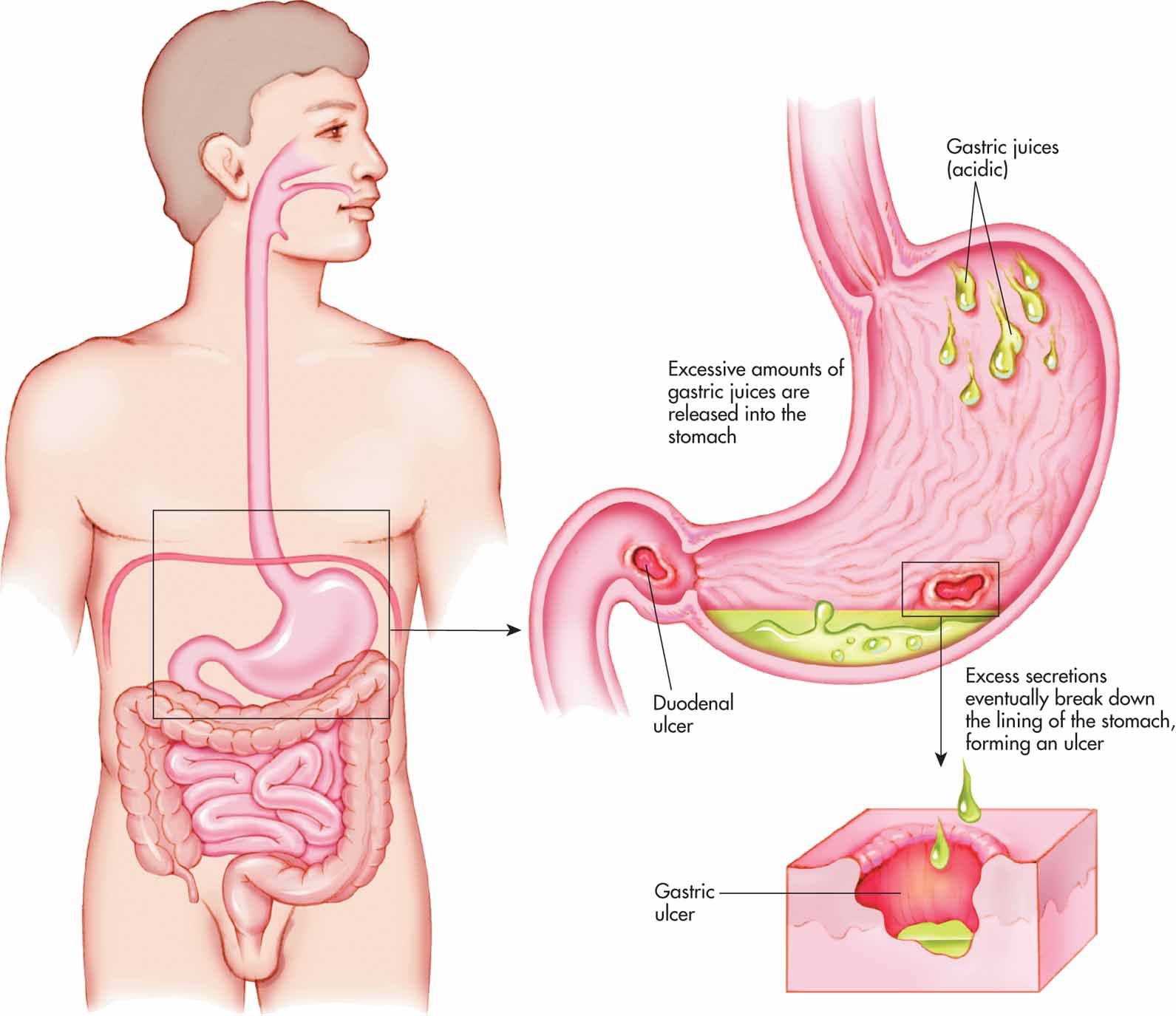
2. Protective medications
Researchers are developing new drugs that can protect the stomach and duodenal lining from damage, potentially reducing the risk of ulcer formation in individuals who require long-term NSAID use.
3. Gut microbiome studies
Investigations into the role of the gut microbiome in peptic ulcer development and healing may lead to new probiotic or prebiotic interventions to support digestive health.
4. Genetic factors
Studies exploring genetic susceptibility to peptic ulcers could pave the way for personalized prevention and treatment strategies based on an individual’s genetic profile.
As research progresses, our understanding of peptic ulcers continues to evolve, offering hope for more effective and targeted approaches to managing this common digestive condition. By staying informed about the latest developments and working closely with healthcare providers, individuals affected by peptic ulcers can look forward to improved outcomes and a better quality of life.
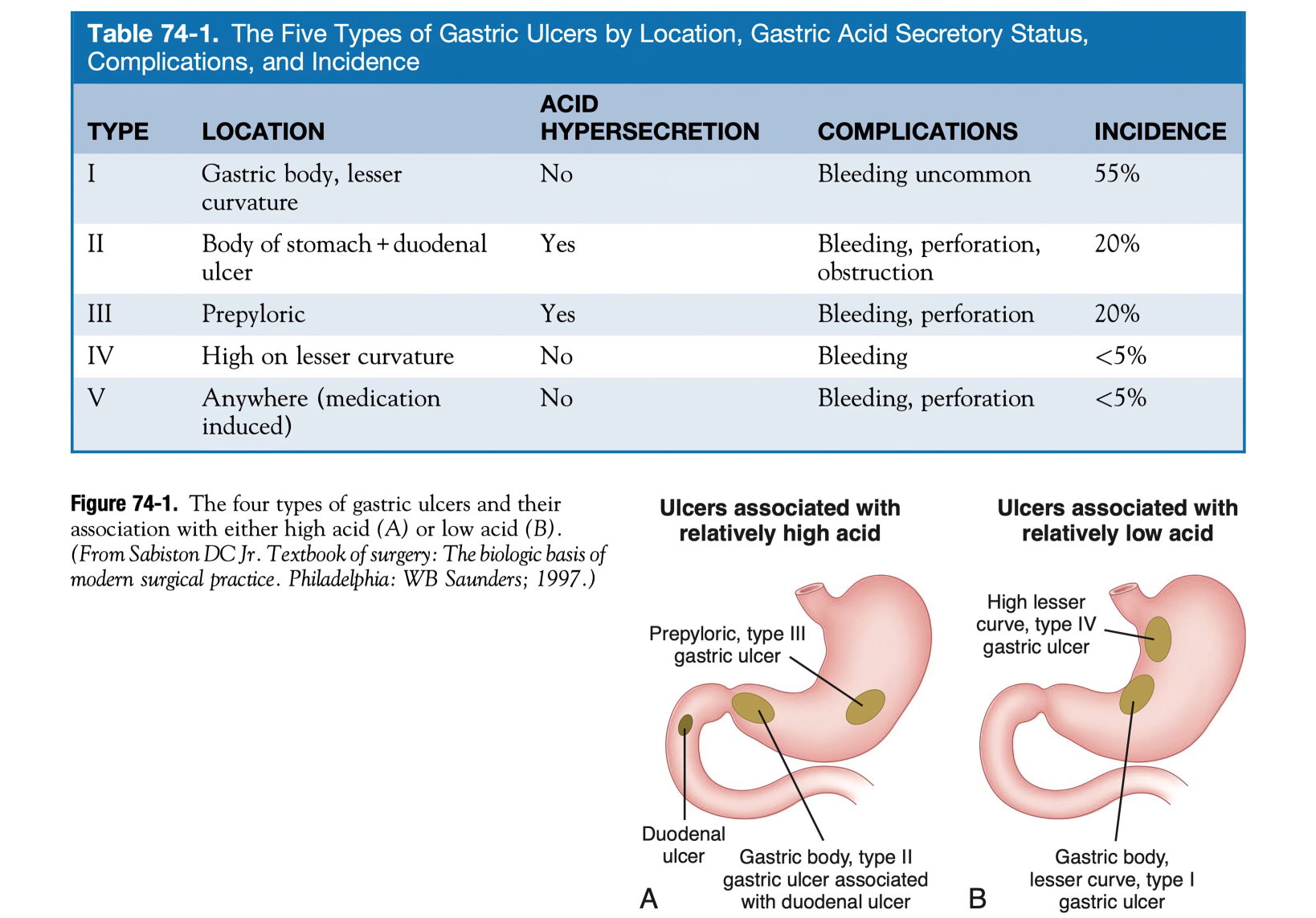
Stomach Ulcer | Peptic Ulcer
Also called: Duodenal ulcer, Gastric ulcer, Stomach ulcer, Ulcer
On this page
Basics
- Summary
- Start Here
- Symptoms
- Diagnosis and Tests
- Treatments and Therapies
Learn More
- Related Issues
- Specifics
See, Play and Learn
- Videos and Tutorials
Research
- Clinical Trials
- Journal Articles
Resources
- Find an Expert
For You
- Teenagers
- Patient Handouts
A peptic ulcer is a sore in the lining of your stomach or your duodenum, the first part of your small intestine. A burning stomach pain is the most common symptom. The pain:
A burning stomach pain is the most common symptom. The pain:
- Starts between meals or during the night
- Briefly stops if you eat or take antacids
- Lasts for minutes to hours
- Comes and goes for several days or weeks
Peptic ulcers happen when the acids that help you digest food damage the walls of the stomach or duodenum. The most common cause is infection with a bacterium called Helicobacter pylori. Another cause is the long-term use of nonsteroidal anti-inflammatory medicines (NSAIDs) such as aspirin and ibuprofen. Stress and spicy foods do not cause ulcers, but can make them worse.
To see if you have an H. pylori infection, your doctor will test your blood, breath, or stool. Your doctor also may look inside your stomach and duodenum by doing an endoscopy or x-ray.
Peptic ulcers will get worse if not treated. Treatment may include medicines to reduce stomach acids or antibiotics to kill H. pylori. Antacids and milk can’t heal peptic ulcers.![]() Not smoking and avoiding alcohol can help. You may need surgery if your ulcers don’t heal.
Not smoking and avoiding alcohol can help. You may need surgery if your ulcers don’t heal.
NIH: National Institute of Diabetes and Digestive and Kidney Diseases
Definition and Facts for Peptic Ulcers (Stomach Ulcers)
(National Institute of Diabetes and Digestive and Kidney Diseases)
Also in Spanish
Peptic Ulcer Disease
(American Academy of Family Physicians)
Also in Spanish
Peptic Ulcer Disease
(American College of Gastroenterology)
Ulcers
(American Academy of Family Physicians)
Also in Spanish
Barium Swallow
(National Library of Medicine)
Also in Spanish
Diagnosis of Peptic Ulcer Disease
(National Institute of Diabetes and Digestive and Kidney Diseases)
Also in Spanish
Fecal Occult Blood Test (FOBT)
(National Library of Medicine)
Also in Spanish
Helicobacter Pylori (H.
 Pylori) Tests
Pylori) Tests(National Library of Medicine)
Also in Spanish
Upper Gastrointestinal (GI) Series
(National Institute of Diabetes and Digestive and Kidney Diseases)
Also in Spanish
Upper GI Endoscopy
(National Institute of Diabetes and Digestive and Kidney Diseases)
Also in Spanish
Treatment for Peptic Ulcers (Stomach Ulcers)
(National Institute of Diabetes and Digestive and Kidney Diseases)
Also in Spanish
Helicobacter pylori and Cancer
(National Cancer Institute)
Also in Spanish
Zollinger-Ellison Syndrome
(National Institute of Diabetes and Digestive and Kidney Diseases)
ClinicalTrials.
 gov: Duodenal Ulcer
gov: Duodenal Ulcer(National Institutes of Health)
ClinicalTrials.gov: Peptic Ulcer
(National Institutes of Health)
ClinicalTrials.
 gov: Stomach Ulcer
gov: Stomach Ulcer(National Institutes of Health)
Article: Prevalence of Helicobacter pylori genotypes: cagA, vacA (m1), vacA (s1), babA2,.
 ..
..Article: The impact of standardized perioperative care management on improving outcomes in…
Article: What counts as patient-important upper gastrointestinal bleeding in the ICU? A.
 ..
..Peptic Ulcer — see more articles
American College of Gastroenterology
Find a Gastroenterologist
(American College of Gastroenterology)
National Institute of Diabetes and Digestive and Kidney Diseases
Ulcers
(Nemours Foundation)
Also in Spanish
Ulcers Facts: Causes, Symptoms, Risk Factors
Written by WebMD Editorial Contributors
Medically Reviewed by Neha Pathak, MD on September 17, 2021
- What Are Peptic Ulcers?
- How Are Ulcers Diagnosed?
- How Are Ulcers Treated?
There is no clear evidence to suggest that the stress of modern life or a steady diet of fast food causes ulcers in the stomach and small intestine, but they are nonetheless common in our society: About one out of every 10 Americans will suffer from the burning, gnawing abdominal pain of a peptic (or gastric) ulcer at some point in life.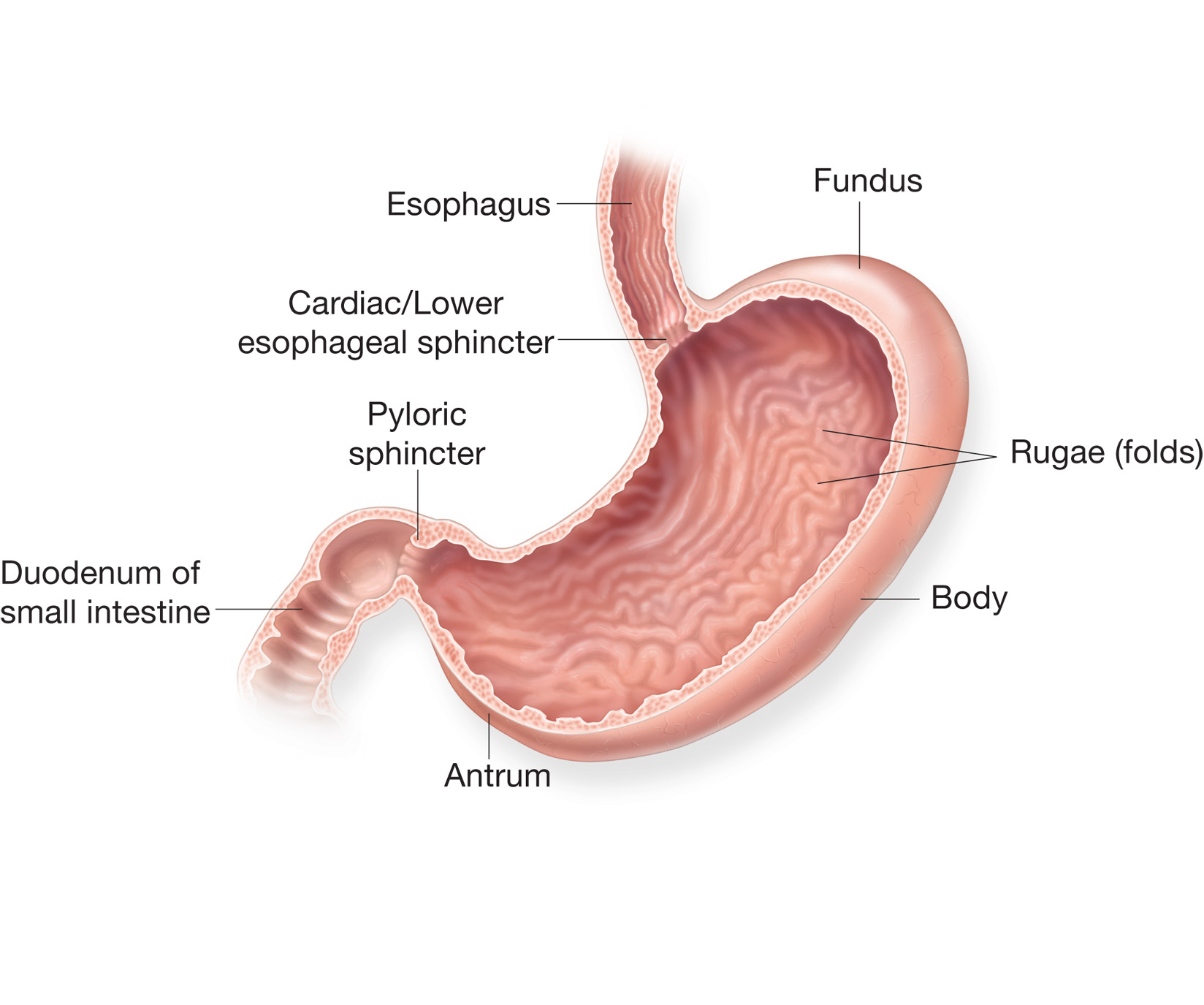
Peptic ulcers are holes or breaks in the protective lining of the duodenum (the upper part of the small intestine) or the stomach — areas that come into contact with stomach acids and enzymes. Duodenal ulcers are more common than stomach ulcers. Comparatively rare are esophageal ulcers, which form in the esophagus — or swallowing tube — and are often a result of exposure to medications, like certain antibiotics or anti-inflammatories, or alcohol abuse.
Until the mid-1980s, the conventional wisdom was that ulcers form as a result of stress, a genetic predisposition to excessive stomach acid secretion, and poor lifestyle habits (including overindulging in rich and fatty foods, alcohol, caffeine, and tobacco). It was believed that such influences contribute to a buildup of stomach acids that erode the protective lining of the stomach, duodenum, or esophagus.
While excessive stomach acid secretion certainly plays a role in the development of ulcers, a relatively recent theory holds that bacterial infection is the primary cause of peptic ulcers. Indeed, research conducted since the mid-1980s has shown that the bacterium Helicobacter pylori(H. pylori) is present in more than 90% of duodenal ulcers and about 80% of stomach ulcers. However, more recent figures indicate those percentages are declining.
Indeed, research conducted since the mid-1980s has shown that the bacterium Helicobacter pylori(H. pylori) is present in more than 90% of duodenal ulcers and about 80% of stomach ulcers. However, more recent figures indicate those percentages are declining.
Other factors also seem to contribute to ulcer formation, especially in someone with H. pylori:
- Overuse of over-the-counter painkillers (such as aspirin, ibuprofen, and naproxen)
- Heavy alcohol use
- Psychological stress
- Smoking
Other studies show that stomach ulcers are more likely to develop in older people. This may be because:
- Arthritis is prevalent in older people, and alleviating arthritis pain can mean taking daily doses of aspirin or ibuprofen.
- With advancing age the pylorus (the valve between the stomach and duodenum) relaxes and allows excess bile (a compound produced in the liver to aid in digestion) to seep up into the stomach and erode the stomach lining.

Also, for no known reason, people with type A blood are more likely to develop cancerous stomach ulcers.
Duodenal ulcers tend to appear in people with type O blood, possibly because they do not produce the substance on the surface of blood cells that may protect the lining of the duodenum.
If your doctor thinks you might have a peptic ulcer, they’ll probably start with a physical exam and some tests:
- They’ll feel your belly and ask if you’ve had things like tenderness, pain, or bloating. They might use a stethoscope to listen to any sounds your stomach is making.
- The next step will be tests to look for signs of the H. pylori bacteria. Your doctor may take samples of your blood, stool, or breath for these.
- In some cases, especially if you’re older and your symptoms include things like weight loss or loss of appetite, they might use a long, flexible tube called an endoscope to look down your throat and into your stomach for signs of an ulcer.
 (You’ll be given medicine to make you sleepy.) An endoscope can also take a small sample of tissue from an ulcer that can be tested in a laboratory.
(You’ll be given medicine to make you sleepy.) An endoscope can also take a small sample of tissue from an ulcer that can be tested in a laboratory. - They might ask you to drink a milky liquid called barium before they take X-rays of your stomach. This drink coats your digestive system and makes problems like ulcers show up more clearly.
If you have a peptic ulcer, your doctor will recommend a treatment plan based on what’s causing it:
- The most common remedy is a combination of antibiotic drugs to kill the H. pylori bacteria and medications to get rid of acid in your stomach. These typically include proton pump inhibitors (like Aciphex or Nexium), and antibiotics. You’ll take PPIs for several weeks.
- If your ulcer is caused by over-the-counter painkillers, you’ll need to quit taking them.
- They also may give you a drug called a protectant, which coats ulcers to protect them from stomach acid.
Lifestyle changes can help, too. You might need to:
You might need to:
- Quit smoking.
- Drink less alcohol or caffeine.
- Stay away from foods that make your symptoms worse.
After treatment, your doctor may want to keep a close eye on you, depending on:
- The size of your ulcer and where it was
- How well the treatment worked
- If you had any other problems
An ulcer can cause serious problems, like stomach bleeding, if it’s not treated. An untreated ulcer also can lead to a hole in your stomach, which may need to be fixed with surgery.
Top Picks
Stomach ulcer: an appointment for treatment in St.
 Petersburg, prices from 1500 rubles
Petersburg, prices from 1500 rubles
Gastric ulcer
0003
| Call us |
symptoms. Let’s get life back without limits.
Let’s prevent relapses and complications.
- Causes of peptic ulcer
- K When to run to the doctor: bright symptoms of stomach ulcer
- Types of diagnosis of peptic ulcer
- Treatment of gastric ulcer
- Simple recommendations for the prevention of ulcer
Primary appointment 9000 3
1 500 ₽
Repeated reception
1 300 ₽
All prices
“A stomach ulcer is one of the most common pathologies of the gastrointestinal tract. Having arisen once, it is recurrent chronic the disease can worsen throughout the life of the patient. Damage to the mucous membrane of the stomach or intestines not only causes discomfort, but also disrupts the functioning of the digestive system, causing dangerous complications – internal bleeding, tissue perforation and even oncology”
Causes of peptic ulcer 9 0060 In the vast majority of cases, the ulcer develops against the background of infectious gastritis caused by Helicobacter pylori. There are other factors that provoke the development of peptic ulcer: Wrong diet; Constant consumption of spicy and salty foods that irritate the walls of the stomach; Long-term use of drugs that have a negative effect on the functions of the gastrointestinal tract; Frequent drinking; Injuries of the abdomen and spine; Blockage of gastric veins; Frequent stress; Pathologies of the central nervous system; Strong emotional and physical stress. The disease can also occur against the background of aggravated heredity: Increased risk of Helicobacter pylori infection from infected family members; Congenital pathologies of the gastrointestinal tract; Food allergies causing gastritis. When to run to the doctor: bright symptoms of a stomach ulcer Symptom No. 1 – pain in the pit of the stomach. Pressing or stabbing pain in the center of the body between the costal arches, just below the sternum, is a characteristic sign of inflammatory diseases of the stomach. If the mucosal defect is located in the stomach, the sensations increase after eating. If the duodenum is damaged, then the pain is always present and may increase with movement. Other symptoms: Heartburn; Regular nausea; Vomiting after eating; Sour belching; Bloating; Flatulence; Stool disorders. Sharp weight loss is another indirect sign of a stomach ulcer. Patients’ appetite is not disturbed even during an exacerbation of the disease, but since food increases discomfort, patients try to eat less and, accordingly, lose weight. Do not delay your visit to the doctor! Turning to a gastroenterologist at the first symptoms of a stomach ulcer allows you to speed up treatment, avoid the transition of the disease to a chronic form and not bring the situation to surgery. To make an appointment with the Lancet specialists, use the online form or call +7 812 223 00 59. This bacterium lives in the digestive system of more than 60% of the population of our planet. Under favorable conditions (with a decrease in immunity, dysbacteriosis, etc.), it multiplies pathologically rapidly, causing irritation of the mucous membranes and provoking inflammation (gastritis). In the future, if left untreated, the mucous barrier is damaged and wounds (ulcers) form.
This bacterium lives in the digestive system of more than 60% of the population of our planet. Under favorable conditions (with a decrease in immunity, dysbacteriosis, etc.), it multiplies pathologically rapidly, causing irritation of the mucous membranes and provoking inflammation (gastritis). In the future, if left untreated, the mucous barrier is damaged and wounds (ulcers) form. Sign up 
Make an appointment 
Make an appointment Types of peptic ulcer diagnostics available in our clinic 900 81
Palpation examination
The doctor takes a history and feels the patient’s abdomen, identifying the source of discomfort.
Breath test for Helicobacter pylori
Laboratory examination confirms or refutes the presence of Helicobacter pylori, which provokes the appearance of an ulcer.

Ultrasound of the abdominal cavity
Ultrasound examination makes it possible to assess the relationship between the pathology and the work of other organs of the gastrointestinal tract: liver, gallbladder and pancreas.
Coprogram
Laboratory examination of the composition of the feces reveals occult blood, indicating small gastric bleeding, which may not be noticeable during gastroscopy.
Diagnosis of gastric ulcer and making an accurate diagnosis is possible already at the initial appointment. For quick professional help, please contact our clinic at: St. Petersburg, st. Lensoveta, 34, 3A.
The cost of all diagnostic procedures is indicated in the “Prices” section.
| Make an appointment |
Treatment of gastric ulcer
The doctors of our center prescribe a complex treatment that not only stops the disease, but is also aimed at general improvement of the digestive system and prevention of relapses.
Therapy is based on medication, diet and restriction of physical activity. If the disease cannot be cured with medication, surgery is prescribed.
Non-drug therapy
Dietary, fractional nutrition according to Pevzner – table No. 1
Exclusion of alcoholic beverages and cigarettes rest and wakefulness
Physical and emotional rest
Drug treatment
To reduce acidity and prevent irritation of the stomach or intestinal mucosa – Omez, Famotidine, Gastrocepin or Phosphalugel
To accelerate wound healing – Actovegin
To stop the reproduction of Helicobacter pylori – antibacterial drugs such as Metronidazole or Clarithromycin
Operative Intervention
If medication fails, the patient is referred for an operation to close the ulcer. If there are too many ulcerations, surgeons decide to resect part of the stomach or intestines.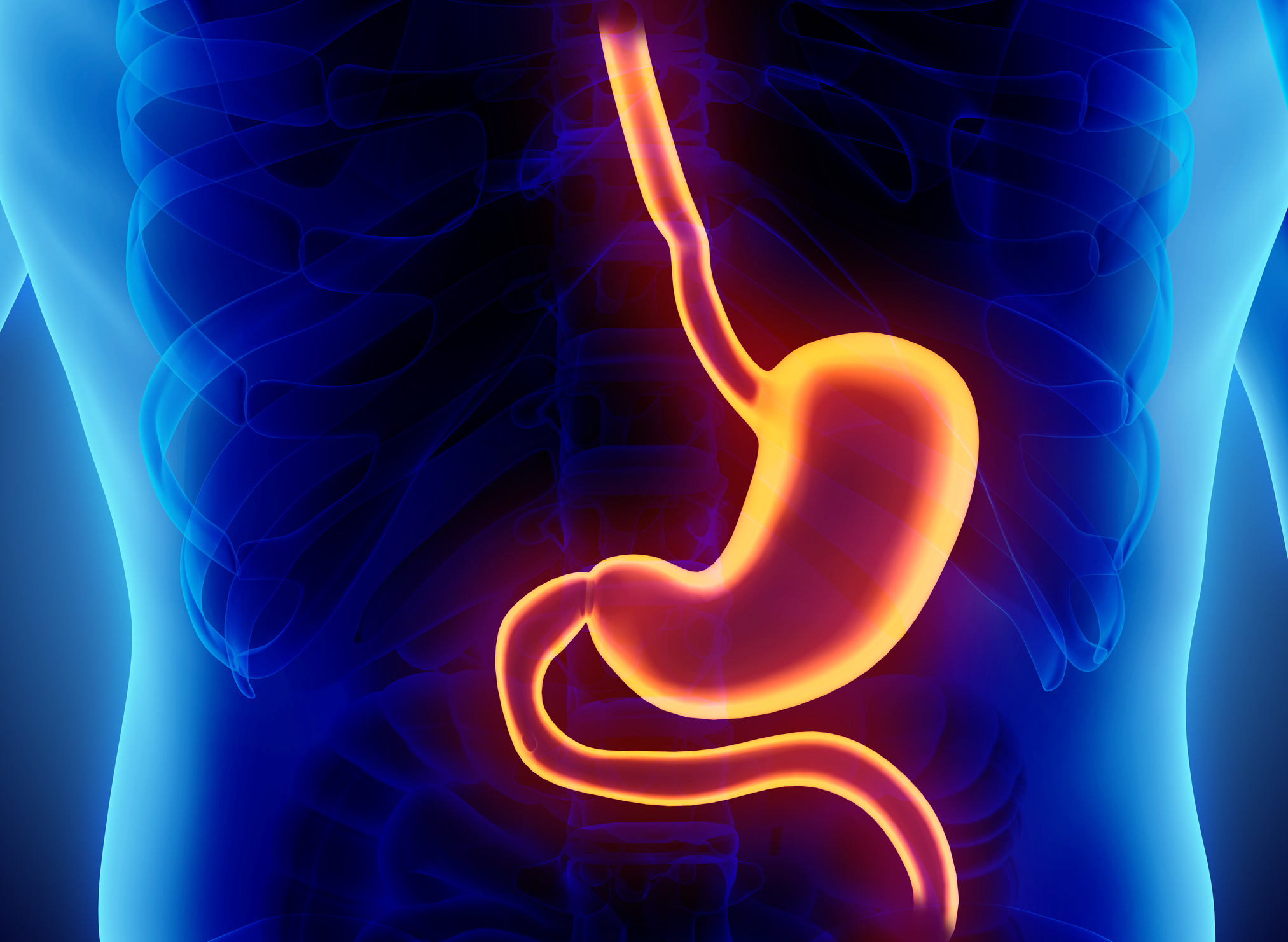
Surgical intervention is necessary in case of persistent bleeding, as well as in the appearance of neoplasms of a malignant or benign nature.
| Make an appointment |
Simple recommendations for the prevention of ulcers from the doctors of the Lancet Outpatient Surgery Center is the key to a healthy stomach and intestines.
If the disease has already manifested itself, you should strictly follow the doctor’s recommendations, eat right and undergo endoscopic control once a year to prevent relapses.
Fast quality care directly from the right specialist
The average experience of doctors in our clinic is 23.5 years
Transparency in work and lack of imposed services: you receive diagnostics and assistance specifically for your disease
| Sign up ite us |
All Referral Services
Abdominal Ultrasound
More
Laboratory Tests
More info
More info
Chronic cholecystitis
More info
Reflux esophagitis
Read more
Read more
Gastritis
Read more
Biliary dyskinesia
More info
Do you want us to call you back?
Leave a request and we will answer all your questions in detail!
By submitting an application, you agree to the processing of personal data
ᐈ Diagnosis and treatment of gastric and duodenal ulcers in St.
 Petersburg
Petersburg
A stomach and duodenal ulcer (gastroduodenal ulcer) is a serious and fairly common pathology. It is detected in almost 25% of patients with abdominal pain, and approximately 3-5% of people during their lives experience this disease at least once. Moreover, most often we are talking about a pathology prone to recurrence, and in most cases, gastric and duodenal ulcers are diagnosed.
Inadequate and untimely treatment of gastroduodenal ulceration is fraught with the development of formidable complications and increases the oncological risk. Therefore, in modern medicine, great importance is attached to reliable diagnosis of the pathology of the gastrointestinal tract, using modern informative and safe methods.
What is a stomach ulcer
A gastroduodenal ulcer is a self-appearing defect on the inner surface of the walls of the stomach or duodenum. It often develops against the background of existing inflammatory changes, although the occurrence of acute ulcers without previous pathology of the stomach is not excluded. It depends on the nature of the main ulcerogenic (contributing to ulceration) factor.
It depends on the nature of the main ulcerogenic (contributing to ulceration) factor.
In the initial stages, when the defect is small and does not go beyond the mucous membrane, they speak of the presence of erosion. Subsequently, as it deepens and expands, an ulcer is already diagnosed. At first, it has a smooth thin edge, a flat bottom and is able to overgrow without forming a rough scar.
But long-term ulceration looks different. It has dense, unevenly thickened and raised edges, a crater-like tuberous bottom with layers of fibrin, traces of tightening scarring along the periphery. Such a chronic ulcer heals for a long time with the formation of deforming scars and can become a site of malignancy (malignancy) of cells, turning into a cancerous ulcer.
Why ulcers appear in the stomach and intestines
Peptic ulcer develops if the own protective (protective) properties of the mucous membrane of the stomach and duodenum 12 is not enough to resist ulcerogenic factors. This is the key moment of pathogenesis.
This is the key moment of pathogenesis.
Etiological (ulcerogenic) factors include:
- Infection of the stomach with a special bacterium – Helicobacter pylori. The defects that develop in this case are called Helicobacter-associated. This bacterium directly damages the mucous membrane, disrupts the migration of epithelial cells during the healing process, and provokes their accelerated death.
Carriers of Helicobacter pylori infection is about 90% of the population, it is considered the main causative factor in the development of chronic gastritis and gastroduodenal ulcers. In this case, we are talking about excessive aggression of Helicobacter pylori, combined with increased vulnerability of the mucous membrane and a decrease in its ability to regenerate. This is usually facilitated by various predisposing factors.
- Taking non-steroidal anti-inflammatory drugs (NSAIDs). The basis of their action is the blockade of the synthesis of prostaglandins, and a side effect of this is a decrease in the secretion of gastric mucus and inhibition of the production of bicarbonates.
 As a result, local defense mechanisms are weakened, the mucous membrane becomes sensitive to the action of gastric juice. Steroid ulcers form in at least 3% of patients taking NSAIDs, even if they follow all the doctor’s recommendations.
As a result, local defense mechanisms are weakened, the mucous membrane becomes sensitive to the action of gastric juice. Steroid ulcers form in at least 3% of patients taking NSAIDs, even if they follow all the doctor’s recommendations. - Acute stress reaction. At the same time, the autonomic regulation of internal organs is sharply disrupted, microcirculation changes, and defense mechanisms are weakened.
- Errors in nutrition, smoking, alcoholism.
A number of patients also have a hereditary predisposition to peptic ulcer and other gastrointestinal diseases.
How it manifests itself
The main symptoms of a stomach ulcer:
- Pain in the abdomen. This is the most common complaint of patients, and it is she who becomes the reason for going to the doctor. Moreover, the stomach hurts with an ulcer, usually on an empty stomach, discomfort appears 1–2 hours after eating and is removed by eating or baking soda solution.
 The pains are aching, burning, unclear in nature, of varying intensity and duration. And a change in the usual pattern of pain syndrome usually indicates the development of complications.
The pains are aching, burning, unclear in nature, of varying intensity and duration. And a change in the usual pattern of pain syndrome usually indicates the development of complications. - Heartburn. This symptom may appear even before the formation of the pain syndrome or simultaneously with it.
- Dyspepsia in the form of belching, heaviness in the abdomen, nausea, changes in appetite. Indicates a functional inferiority of digestion.
- Psycho-emotional manifestations (irritability, decreased performance, etc.). They are secondary and are caused by a reaction to chronic pain syndrome and dyspepsia.
There are also insidious “silent” ulcerative defects that do not give tangible discomfort and remain without due attention for a long time. Therefore, the treatment of the stomach should take into account not only the patient’s complaints, but also the examination data.
Why ulcers should be detected and treated
Peptic ulcer is not just a pathology that is very uncomfortable for patients.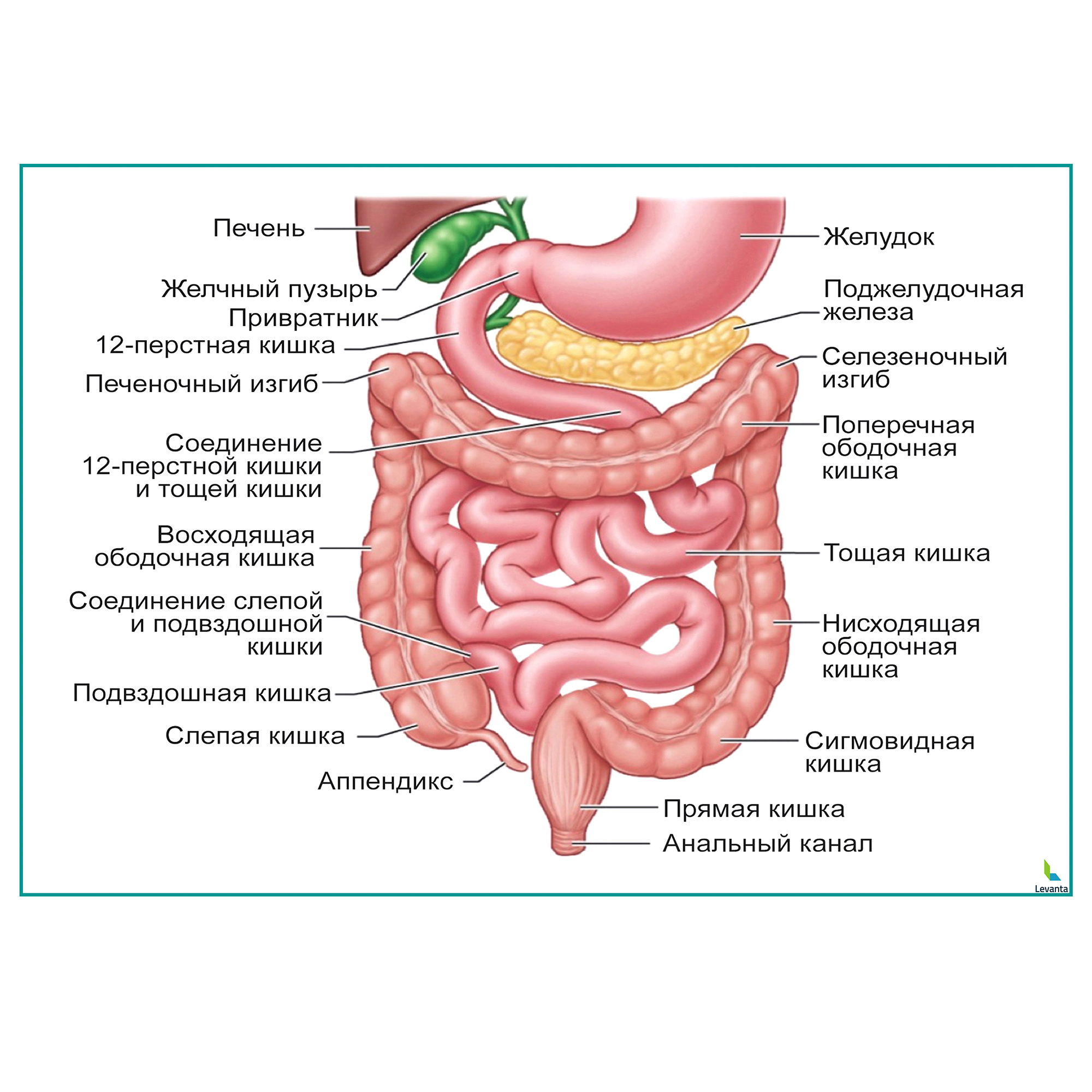 It is considered one of the most dangerous conditions in gastroenterology, which is associated with a high risk of developing severe complications. Moreover, they can appear in patients with different “experience” of the disease, tend to progress rapidly and usually require urgent surgical intervention.
It is considered one of the most dangerous conditions in gastroenterology, which is associated with a high risk of developing severe complications. Moreover, they can appear in patients with different “experience” of the disease, tend to progress rapidly and usually require urgent surgical intervention.
The main complications include:
- Bleeding from the edges or bottom of the ulcer due to the destruction of the vessels located here. May be accompanied by bloody vomiting (coffee grounds) or an admixture of altered blood in the stool.
- Perforation of the wall of the affected organ. In this case, a through defect is formed with the release of the contents of the stomach (intestine) into the abdominal cavity and the development of peritonitis. Most often, a duodenal ulcer perforates.
- Penetration of an ulcer – a breakthrough into an adjacent organ (into the pancreas, liver, omentum, into other parts of the intestine).
- Cicatricial deformities, including with the development of stenosis (pathological narrowing).
 Most often, the pylorus and the duodenum in the upper third suffer from this.
Most often, the pylorus and the duodenum in the upper third suffer from this.
Another dangerous and often late diagnosed complication is malignancy. Moreover, the emerging tumor at first does not give obvious symptoms, and small changes in the nature of pain usually remain without due attention. This leads to late detection of gastric cancer and worsens the prognosis of treatment.
The importance of good diagnosis
It is wrong to treat gastrointestinal disease at random, relying only on the assessment of symptoms. The selection of therapy should be carried out taking into account the nature of the existing changes, which is possible only with the use of modern informative imaging diagnostic methods. The optimal diagnostic method is FGDS. Moreover, with gastric ulcer, such an examination should be carried out regularly, not only during exacerbation, but also during a period of long-term remission.
Regular diagnosis of the condition of the gastrointestinal mucosa using FGDS is the key to good treatment efficiency and effective prevention of gastrointestinal cancer.
Periodic diagnostics of the stomach and duodenum makes it possible to detect the smallest, only emerging ulcerative defects, control the state of chronic inflammatory foci, and evaluate the dynamics against the background of ongoing treatment.
Principles of treatment
Therapy of gastric ulcer is carried out in a complex and is aimed at solving several key problems:
- Compliance with a diet to eliminate the irritant while providing the patient’s body with the necessary substances.
- Eliminate H. pylori infection (if present) with a combination of antibiotics. This allows you to cope with inflammation, improves the healing process, serves as a preventive measure for the development of complications and relapses.
- Stabilization of the level of gastric acidity and optimization of the proton pump, which reduces the risk of re-damage to tissues and accelerates healing. And the combination of proton pump inhibitors with antibacterial (anti-helicobacter) agents significantly reduces the risk of relapses.

- Reducing the severity of dyspepsia, heartburn and pain.
With the development of complications, the issue of the advisability of surgical treatment is urgently resolved. Currently, it is possible to perform operations in a minimally invasive way, using endoscopic techniques.
At any stage of the disease, a doctor should treat a stomach ulcer. You should not resort to unauthorized correction of the prescribed therapeutic regimen and uncontrolled intake of folk remedies, this is fraught with destabilization of the condition and an increased risk of complications.
Diagnosis and treatment of peptic ulcer in ICLINIC – a competent approach and modern technologies
Ulcerative lesions of the stomach and duodenum is a serious disease that requires special attention. Patients with such a pathology are recommended to be observed by a gastroenterologist and even with prolonged remission, regularly undergo preventive examinations. At the same time, preference should be given to modern, reliable and safe diagnostic and treatment methods.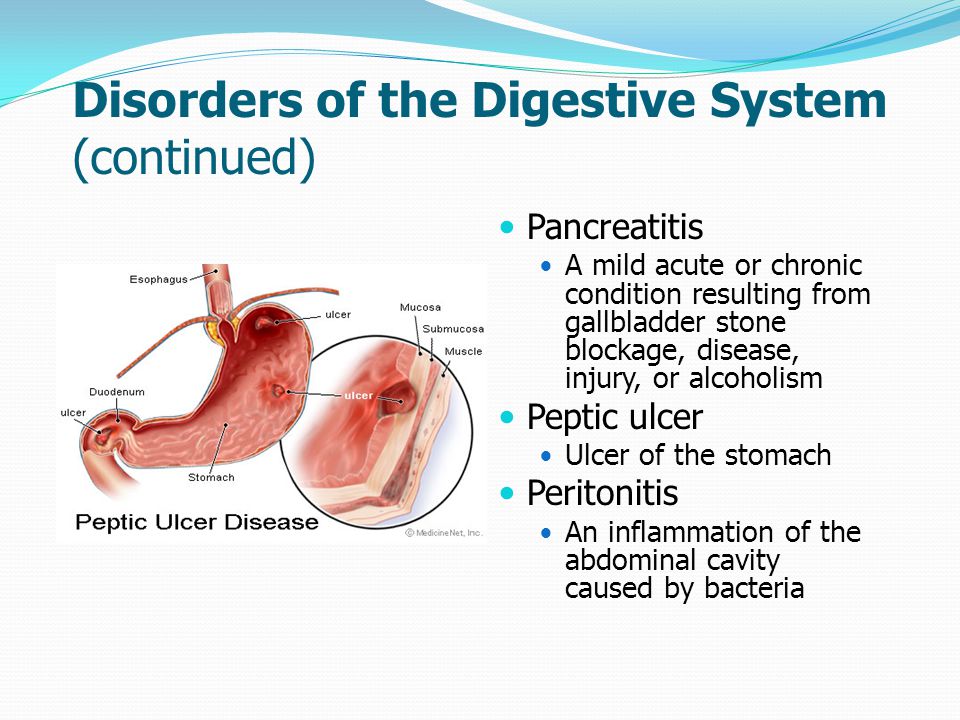
The ICLINIC Digestive Cancer Prevention Center is a modern specialized clinic with high-quality equipment. We are focused on competent timely detection and effective treatment of diseases of the gastrointestinal tract.
During the initial examination, dynamic monitoring of the condition and preventive examinations, ICLINIC widely uses high-class endoscopic equipment with an increased level of comfort. Diagnosis of stomach ulcers and other gastroenterological diseases includes mandatory FGDS. At the same time, we use devices of improved modifications, which reduces the discomfort experienced by the patient and increases the effectiveness of the study.
Treatment of gastric ulcer in our clinic is carried out by an experienced gastroenterologist, using effective therapeutic regimens and in accordance with modern clinical guidelines. This approach allows you to quickly improve the condition of patients, achieve stable remission and prevent the development of complications.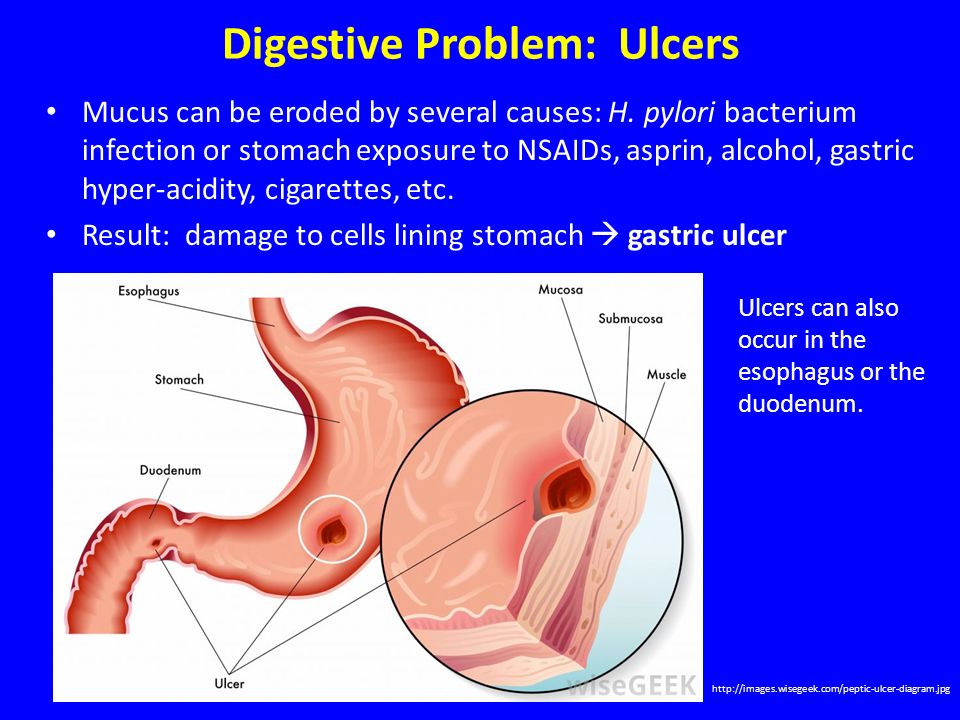
We recommend:
Appointment with a gastroenterologist
FGDS (gastroscopy) with virtual chromoscopy
FGDS (gastroscopy) with virtual chromoscopy at the leading specialist Levchenko E.I.
FCS (fibrocolonoscopy) with virtual chromoscopy
FCS (fibrocolonoscopy) with virtual chromoscopy by the leading specialist Levchenko E.I.
Endoscopy biopsy
Stomach cancer test
Are you over 45 years old?
Make an appointment
What are the benefits of ICLINIC?
The highest level of specialists: among them are doctors of medical sciences and members of the world medical communities, and the average experience of the clinic’s doctors is 16 years of excellent work.
Modern expert equipment: diagnostic devices of the medical center were released in 2017 by the world’s leading manufacturers (Pentax and others of the same level).
Impeccable accuracy of endoscopic diagnosis due to high image resolution of 1.
 25 million pixels.
25 million pixels.Unique technologies for early cancer detection, including i-scan – virtual chromoendoscopy. Using this technology, even the smallest, initial tumor changes can be recognized.
Everything for patient comfort: effective pain relief, including general anesthesia; thin endoscopes less than 10 mm in diameter; fast and accurate handling.
Safety: automated disinfection of equipment with quality control, monitoring of patient vital signs during examinations.
Narrow specialization: the medical center deals with diseases of the digestive system, constantly improving in its field. Our specialists constantly undergo advanced training, participate in international conferences, trainings and seminars in Russia and Europe.
Convenient location: Petrogradsky district of St. Petersburg is located near the center. It is convenient to get here both by car and by public transport. Very close to the clinic is the metro station Chkalovskaya, also not far from the medical center of the station St.
 Petersburg Sportivnaya, Petrogradskaya and Gorkovskaya.
Petersburg Sportivnaya, Petrogradskaya and Gorkovskaya.
Our professionalism is always on guard of your health.
Sign up for an examination
Benefits of gastroscopy at ICLINIC
Our clinic specializes in diagnosing pathologies of the digestive system. Endoscopic examination at ICLINIC has a number of significant advantages:
The highest level of specialists: among them are doctors of medical sciences and members of the world medical communities, and the average experience of the clinic’s doctors is 16 years of excellent work.
Modern expert equipment: the medical center’s diagnostic devices are produced by the world’s leading manufacturers (Pentax and others of the same level).
Impeccable endoscopic diagnostic accuracy thanks to high image resolution of 1.25 million pixels.
Unique technologies for early cancer detection, including i-scan – virtual chromoendoscopy.
 Using this technology, even the smallest, initial tumor changes can be recognized.
Using this technology, even the smallest, initial tumor changes can be recognized.Everything for patient comfort: effective pain relief, including general anesthesia; thin endoscopes less than 10 mm in diameter; fast and accurate handling.
Safety: automated disinfection of equipment with quality control, monitoring of patient vital signs during examinations.
Narrow specialization: the medical center deals with diseases of the digestive system, constantly improving in this area. Our specialists constantly undergo advanced training, participate in international conferences, trainings and seminars in Russia and Europe.
Convenient location: Petrogradsky district of St. Petersburg is located near the center. It is convenient to get here both by car and by public transport. Very close to the clinic is the Chkalovskaya metro station, also not far from the medical center of the station Sportivnaya, Petrogradskaya and Gorkovskaya.


 Pylori) Tests
Pylori) Tests gov: Duodenal Ulcer
gov: Duodenal Ulcer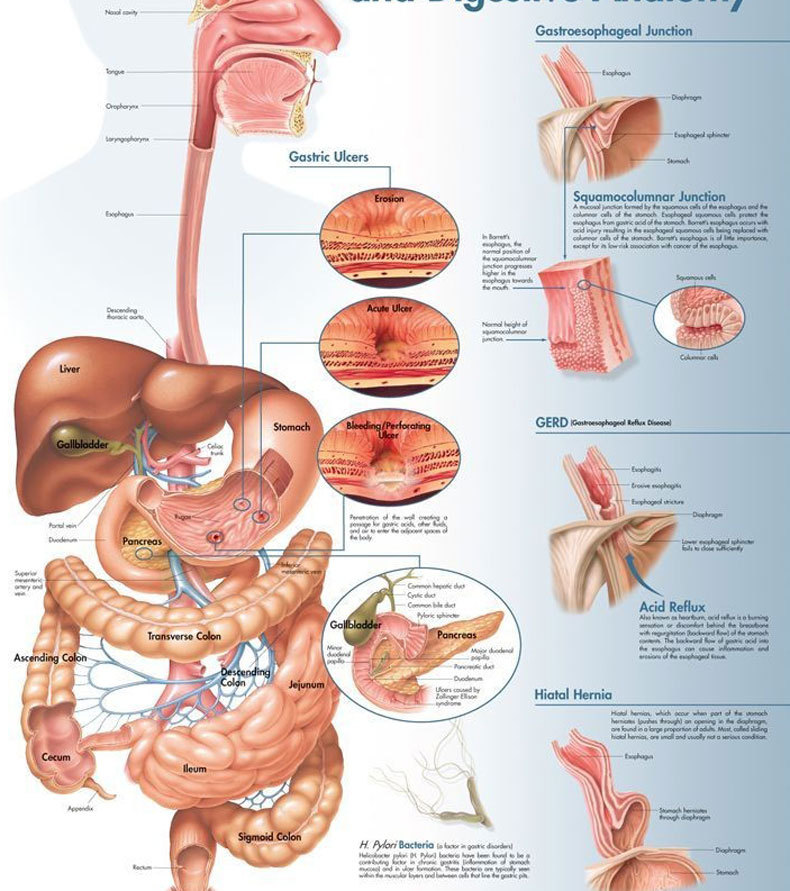 gov: Stomach Ulcer
gov: Stomach Ulcer ..
..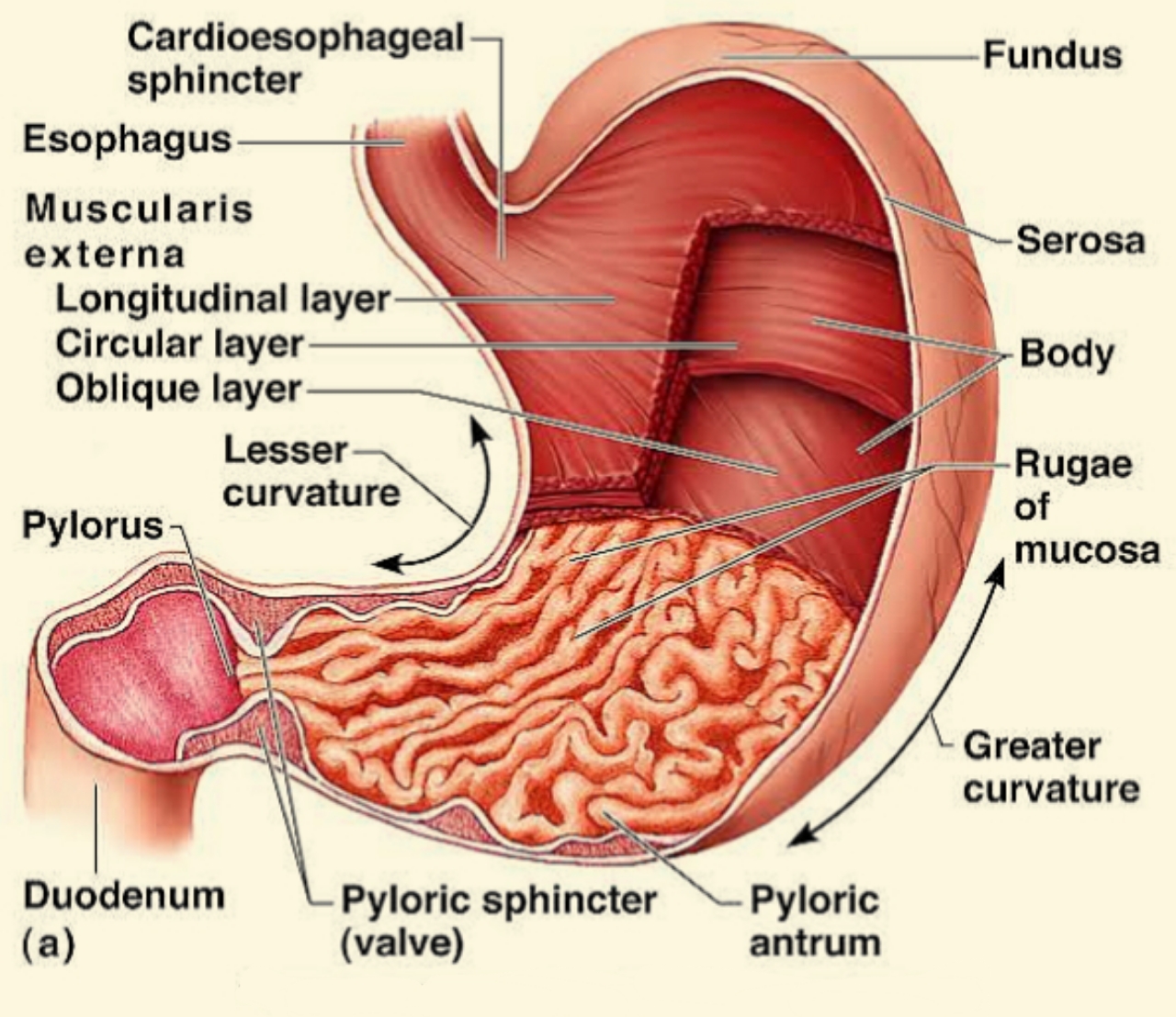 ..
..
 (You’ll be given medicine to make you sleepy.) An endoscope can also take a small sample of tissue from an ulcer that can be tested in a laboratory.
(You’ll be given medicine to make you sleepy.) An endoscope can also take a small sample of tissue from an ulcer that can be tested in a laboratory.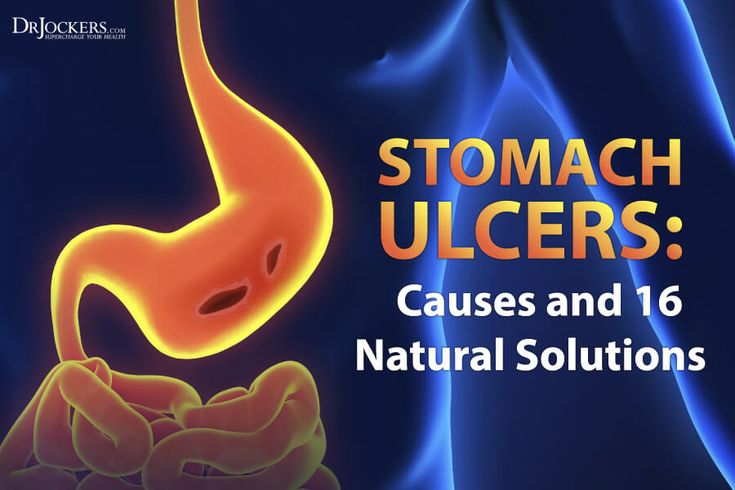
 As a result, local defense mechanisms are weakened, the mucous membrane becomes sensitive to the action of gastric juice. Steroid ulcers form in at least 3% of patients taking NSAIDs, even if they follow all the doctor’s recommendations.
As a result, local defense mechanisms are weakened, the mucous membrane becomes sensitive to the action of gastric juice. Steroid ulcers form in at least 3% of patients taking NSAIDs, even if they follow all the doctor’s recommendations. The pains are aching, burning, unclear in nature, of varying intensity and duration. And a change in the usual pattern of pain syndrome usually indicates the development of complications.
The pains are aching, burning, unclear in nature, of varying intensity and duration. And a change in the usual pattern of pain syndrome usually indicates the development of complications. Most often, the pylorus and the duodenum in the upper third suffer from this.
Most often, the pylorus and the duodenum in the upper third suffer from this.
 25 million pixels.
25 million pixels.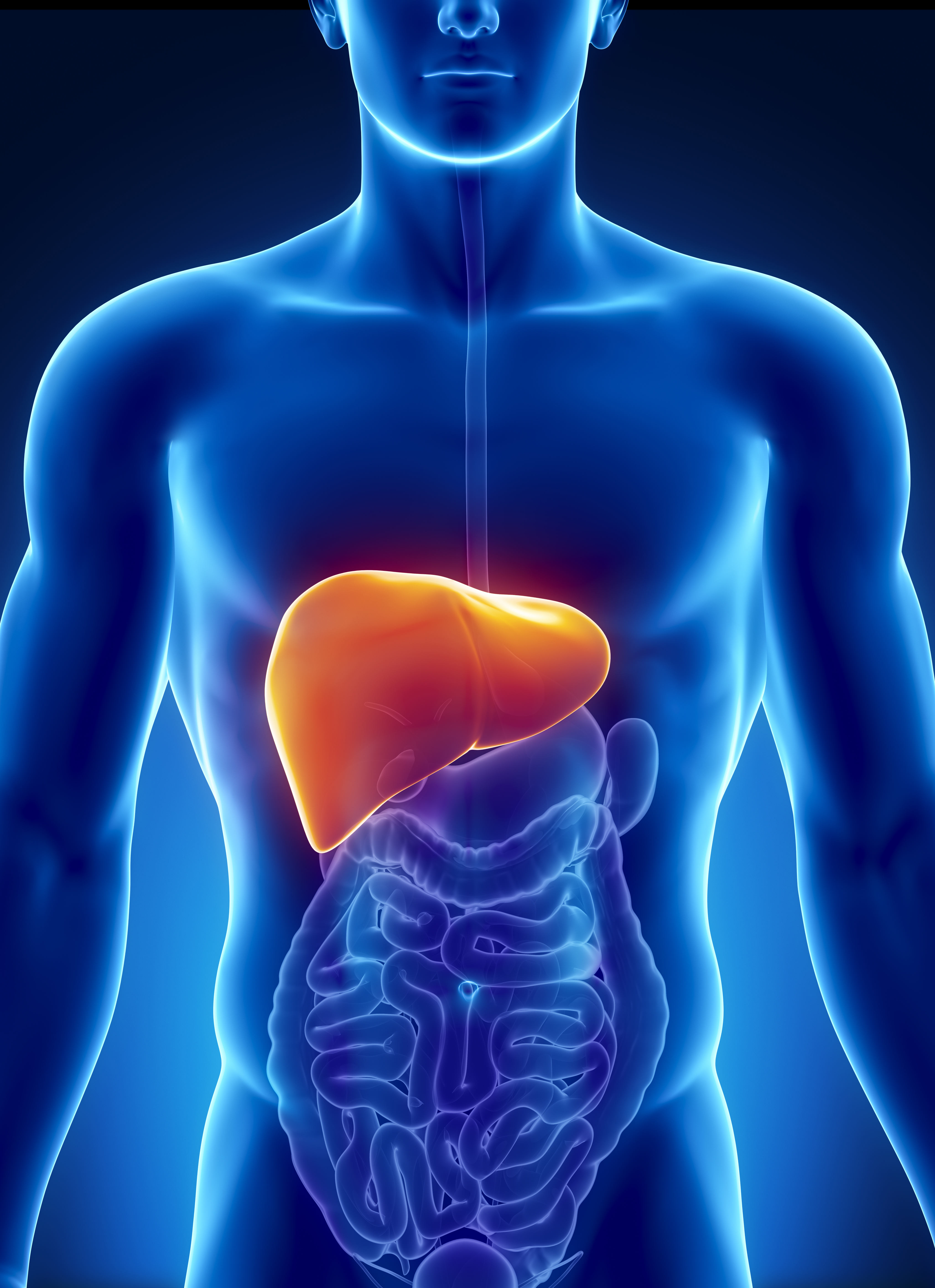 Petersburg Sportivnaya, Petrogradskaya and Gorkovskaya.
Petersburg Sportivnaya, Petrogradskaya and Gorkovskaya.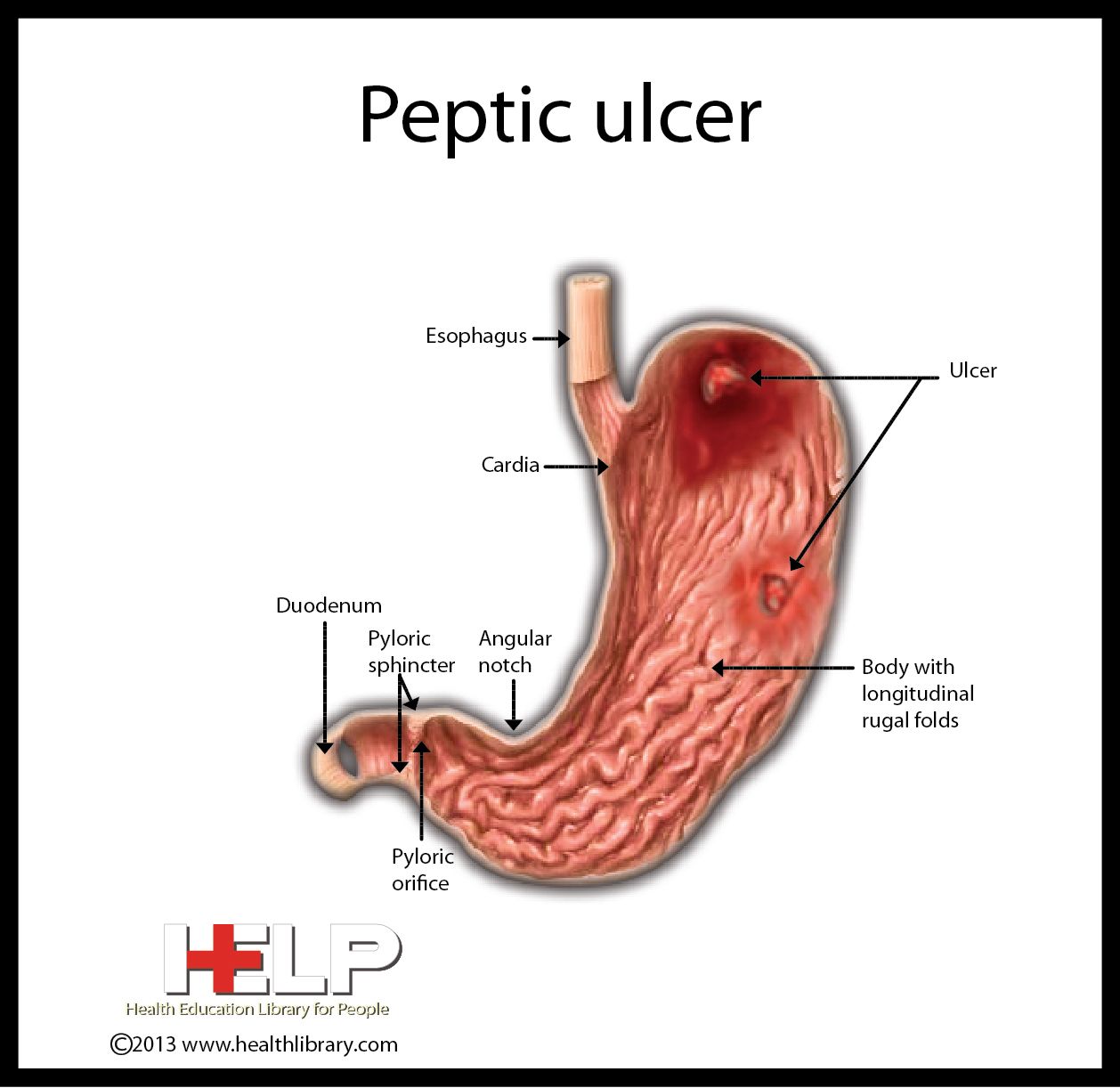 Using this technology, even the smallest, initial tumor changes can be recognized.
Using this technology, even the smallest, initial tumor changes can be recognized.